Are you looking for fun tracing shapes worksheets for preschool students? These fun activities offer an effective and hands-on way to help children grasp the fundamentals of shape recognition and practice tracing different shapes.
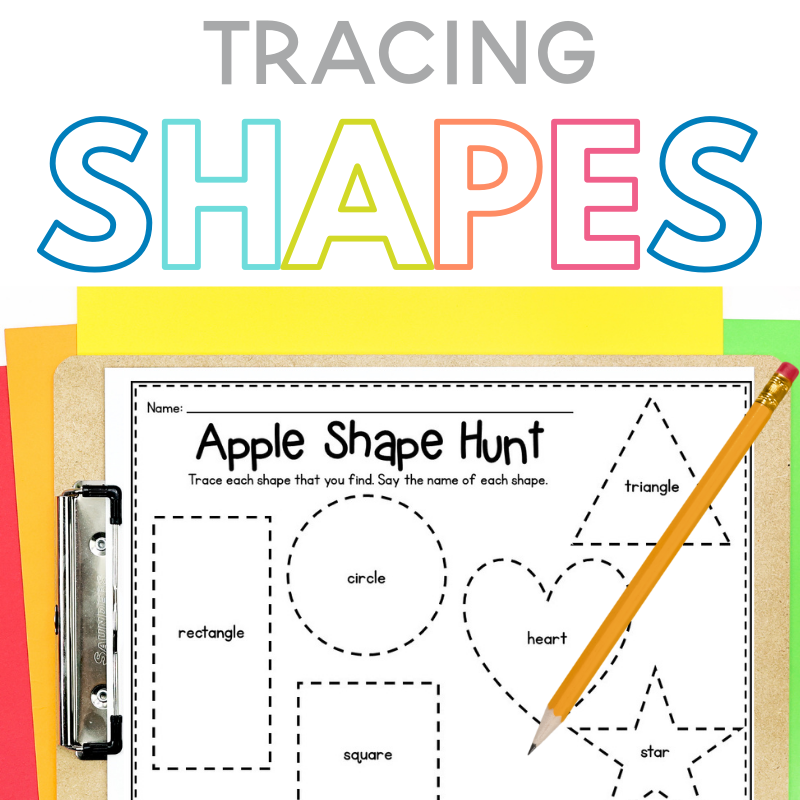
Why are Tracing Shapes Worksheets Beneficial for Preschoolers?
Let’s start with why tracing shapes worksheets for preschool students are beneficial. Tracing is an important pre-writing skill for preschoolers. By tracing different types of shapes, children practice different writing strokes.
Tracing shapes also helps develop fine motor skills and improves hand-eye coordination. It also helps students become comfortable using a writing utensil and develop pencil control.
How can shape tracing benefit a child’s cognitive development?
Shape tracing engages a child’s brain by combining visual perception with motor skills. It helps them recognize and distinguish different shapes, develop spatial awareness, and improve their ability to follow lines and shapes accurately.
At What Age Should Kids Start Tracing Shapes?
Children under the age of 2 do not have the hand and finger strength to trace yet. Instead, they can use their finger to practice tracing shapes they see in books, etc. As their fine motor control develops, you can introduce simple two-dimensional shape-tracing activities.
Around the age of 2-3, most children are ready to start practicing tracing simple straight and curved lines like those found in 2-d shapes. Most children will enjoy tracing basic shapes around this age if it’s presented to them in a fun and age-appropriate way!
Preschool is a great time to introduce common shapes and let students practice tracing them. You can learn more about shape development in this post, When Should Toddlers Know Shapes.
What shapes should children learn to trace first?
2-D shapes are made of curved and straight lines, so they are perfect for tracing pages. Here are a few shapes little ones can start practicing tracing:
- circles
- triangles
- squares
- rectangles
- ovals
- diamonds
- hearts
- stars
It can also be helpful to create starting points for each shape for your child. Simply make a bold dot using a black marker to help students know where to begin tracing. Also, encourage children to say shape names as they trace.
How can I support a child who is struggling with shape tracing?
If a child is struggling with shape tracing, it’s important to provide a supportive and encouraging environment. Break down the tracing process into smaller steps (like just tracing one line), offer guided assistance, and celebrate their progress.
You can also try giving students larger shapes to practice tracing. Practice and repetition are key to improvement as well as making the learning process fun and developmentally appropriate.
Fun Activities to Accompany Shape Tracing Worksheets
To make shape tracing practice more fun for preschool or kindergarten students, it’s important to make it as interactive as possible! Shape Tracing Scavenger Hunts are a great way to help students identify and trace different shapes while helping them move and play.
Shape Tracing Scavenger Hunt
A Shape Tracing Scavenger Hunt is a simple activity that preschool and kindergarten students will love! Print out pictures of each shape and tape them around the classroom for students to find.
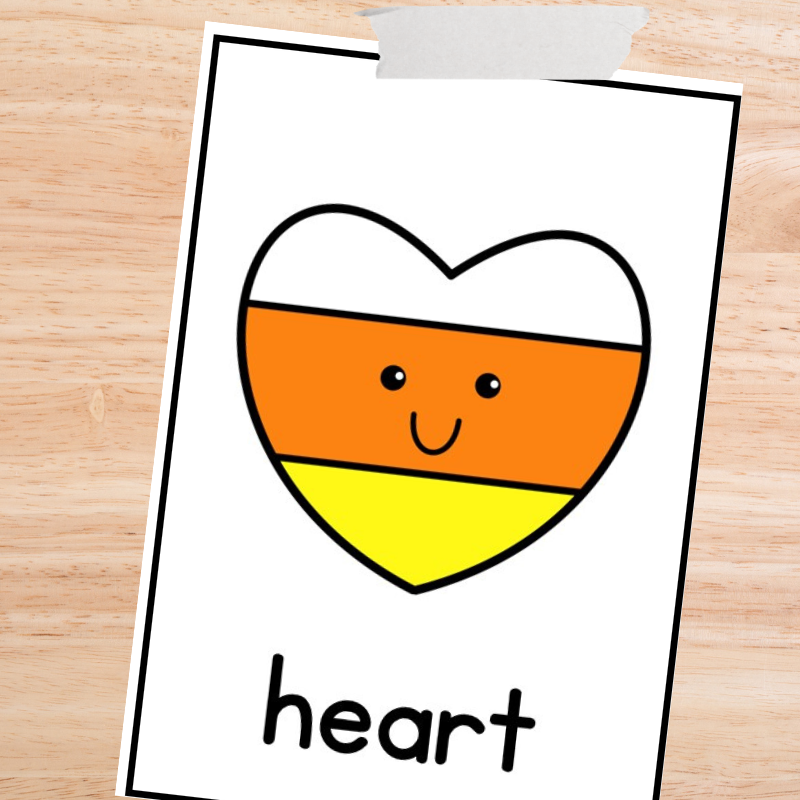
Each student will have a tracing shapes worksheet to trace each shape that they find! This activity helps students learn the names of shapes and practice tracing while moving around the classroom!
This activity can also be used in a sensory bin. Simply cut up the smaller shape cards and add them to any sensory bin. Students will find each shape and then name and trace it. Slide the tracing page into a dry erase pocket for the perfect center that multiple students can use.
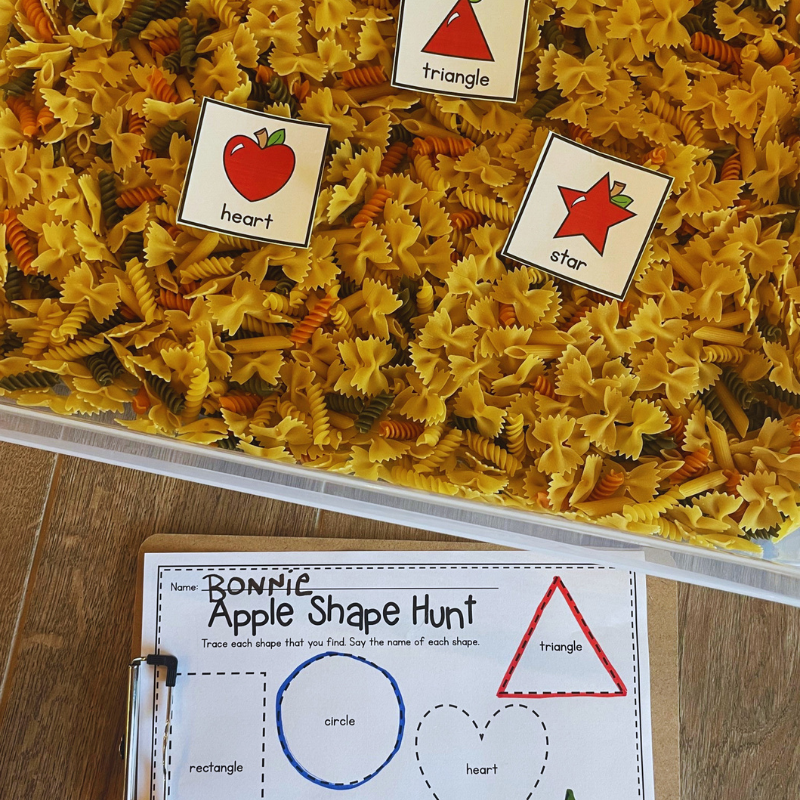
Other Ideas for Using Tracing Shapes Worksheets for Preschool
After students complete the tracing activity, encourage them to build the shapes using a different material like pipe cleaners, popsicle sticks or play dough.

Give students a piece of construction paper and encourage them to try and draw each shape they found independently. If students are able, they could even try cutting out their shapes. This reinforces the concept of shapes and helps little ones notice how each shape is different.
If students are struggling with tracing a particular shape, find worksheets and activities to focus on just that shape. Just type in “diamond shape worksheets” or “star shape worksheets” into your favorite education website. You can also check out these free printable shapes worksheets.
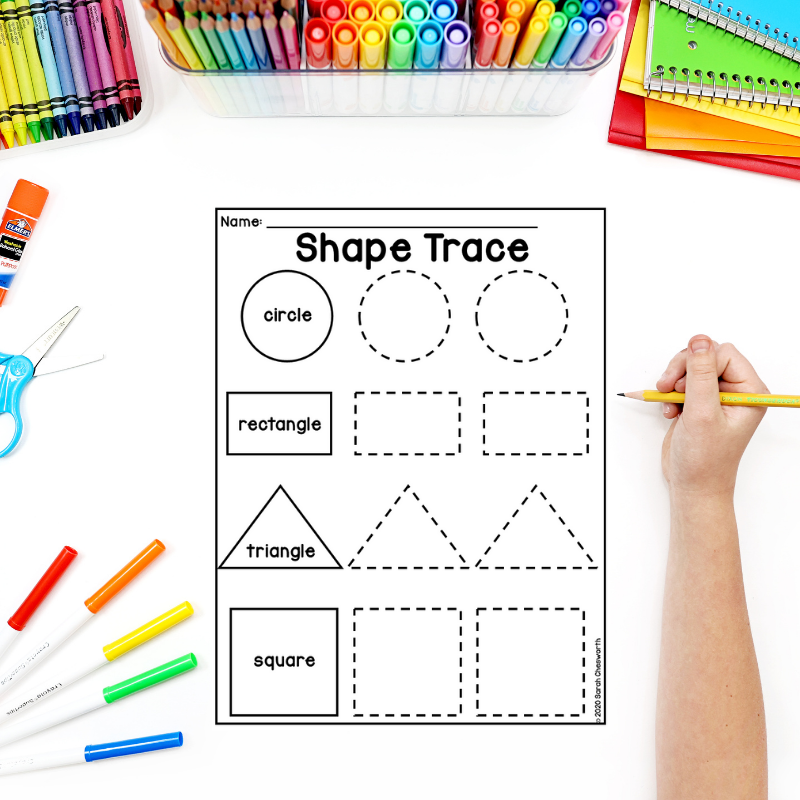
Free Shape Tracing Worksheets
If you are looking for free printable worksheets to help your students practice shape tracing check out this Apple Tracing Shapes Scavenger Hunt. Students will find six different apple shapes, then trace each one on their response sheet.
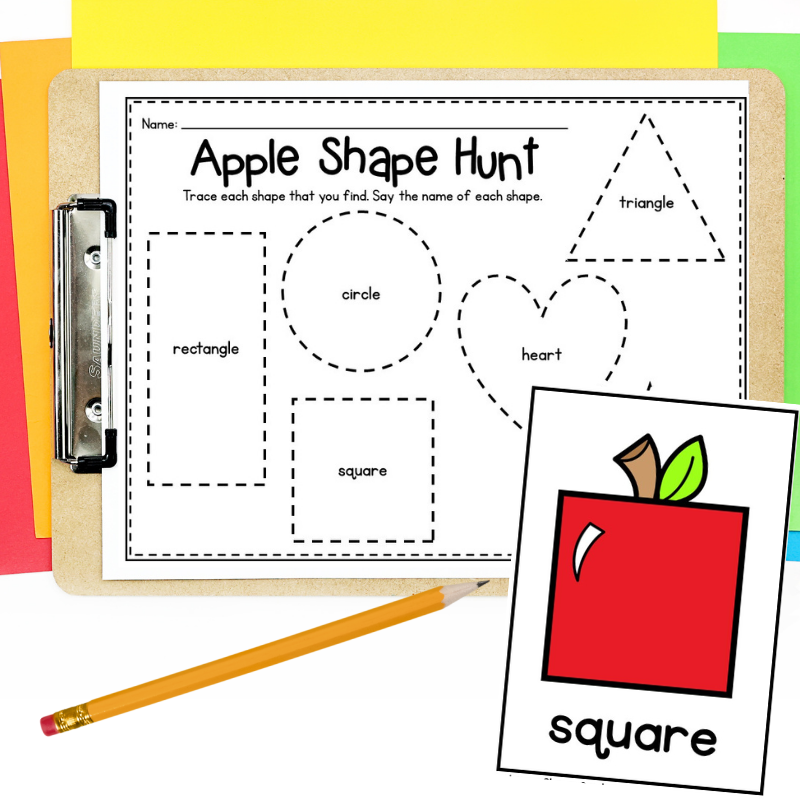
Students will practice identifying and tracing a circle, a square, a heart, a star, a triangle, and a rectangle. Encourage little ones to say the name of the shape as they trace it to help them build math vocabulary.
Additional apple themed activities can be found in this post, 5 Super Simple Preschool Apple Activities
More Shape Tracing Scavenger Hunts
This bundle of tracing shape scavenger hunt activities is a must have for preschool teachers. You will have access to a variety of fun-themed shape scavenger hunts for the entire school year! Here are a few of the themes available:
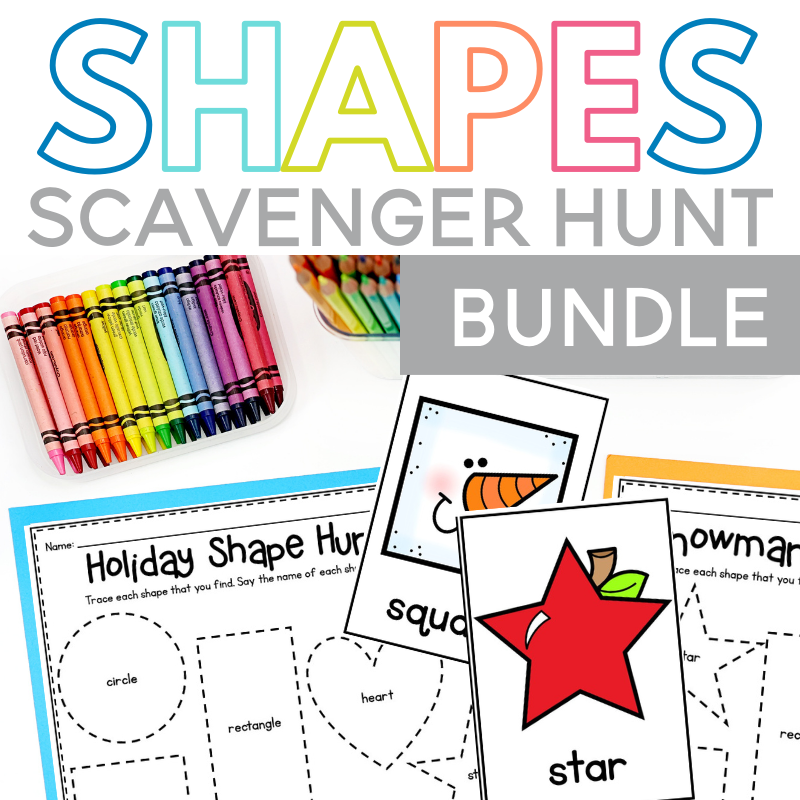
Tracing Shapes Scavenger Hunt- Apples
Tracing Shapes Scavenger Hunt- Pumpkins
Tracing Shapes Scavenger Hunt- Candy Corn
Tracing Shapes Scavenger Hunt- Spiders
Tracing Shapes Scavenger Hunt- Snowman
Tracing Shapes Scavenger Hunt- Gingerbread
Tracing Shapes Scavenger Hunt- Holiday
Tracing Shapes Scavenger Hunt- Valentine
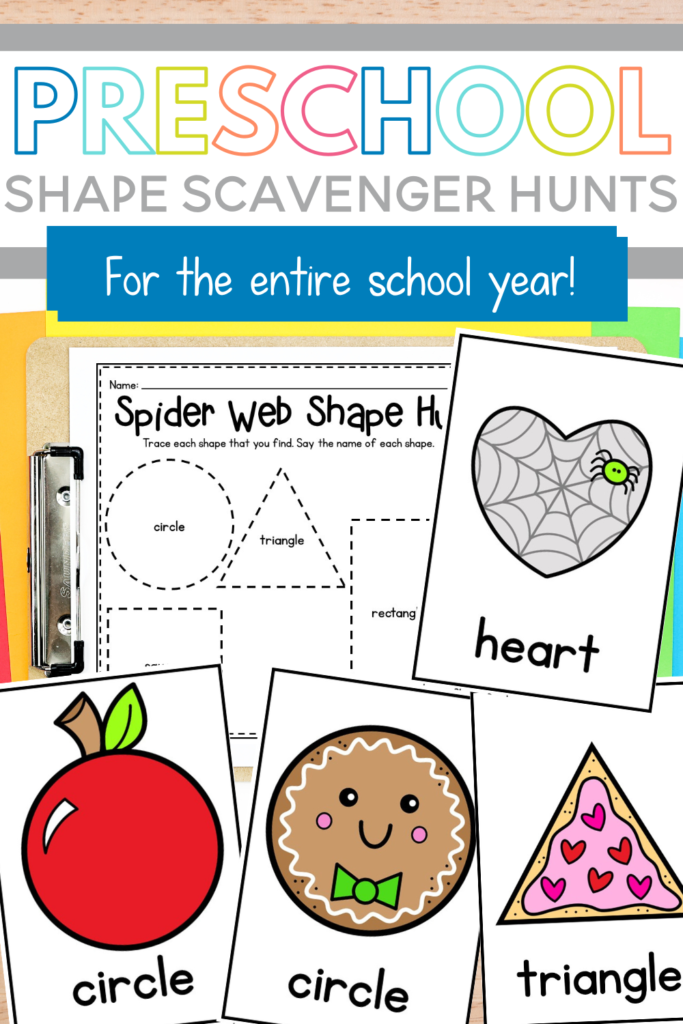
Incorporating tracing shapes worksheets for preschool into your learning routine can have a profound impact on students’ shape recognition skills, fine motor skills, and cognitive abilities.

